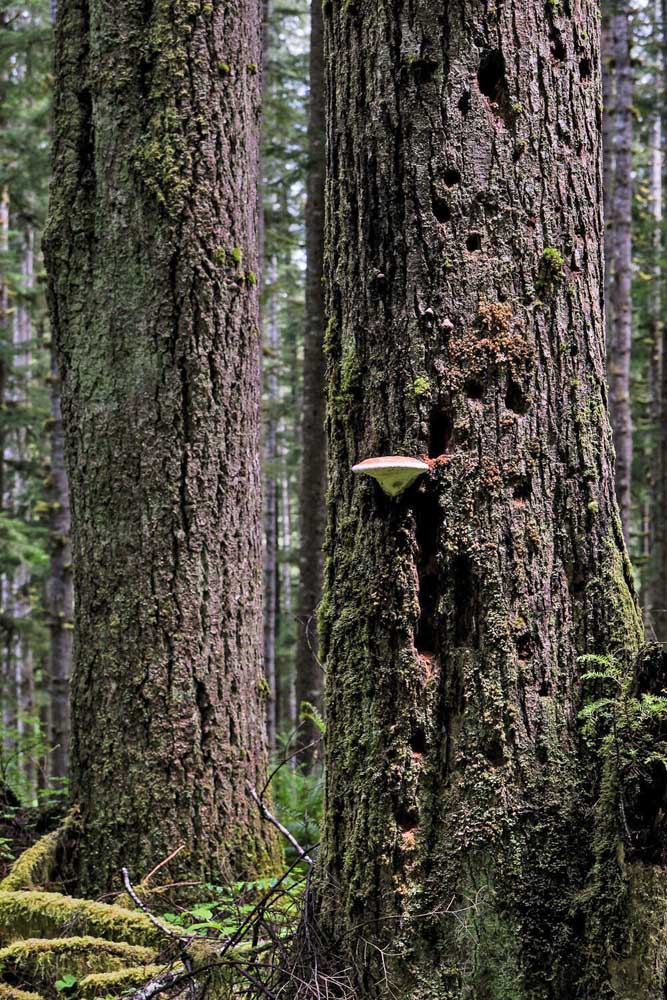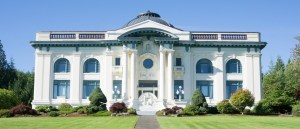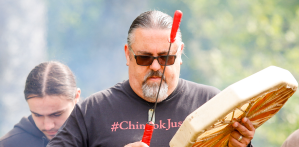New state lands boss pauses some timber sales
Published 4:38 pm Friday, January 17, 2025

- Douglas fir trees seen in a unit of the Freedom timber sale, a proposed logging stand in the Naselle that was removed from consideration last year. It represents the sort of sale that would be paused under an order by the new state lands commissioner.
OLYMPIA — During his inaugural address, Commissioner of Public Lands Dave Upthegrove announced a six-month pause of all timber sales in certain, mature forests on state lands.
Trending
“I know when a timeout is needed,” said Upthegrove. “And that’s what this is — a timeout that allows us the opportunity to work together to better serve the forest and communities of Washington.”
There are few such mature forests left in southwest Washington. In 2021, the DNR itself estimated that only about one percent of state forestlands in the Columbia Planning Unit, the boundaries of which were designated by the agency’s Habitat Conservation Plan and encompass much of Pacific and Wahkiakum counties, were in “older forest conditions.”
But this scarcity hasn’t stopped local opinions about the future of mature, publicly owned forests from polarizing. There are few, if any, neutral courses of action the state can take with regards to these stands.
Trending
On Jan. 17, the DNR issued additional details on the pause. It applies to forests defined as Maturation II. That means they have an understory with diverse species growing beneath the canopy, small gaps appearing due to natural disturbances like wind, and a relatively low presence of large fallen logs or standing dead trees (snags).
“These landscapes are very close to fully mature forests with increased structural complexity and biodiversity. Protecting them is valuable for providing habitat, conserving carbon, and ensuring biodiversity across Washington’s forests,” the agency said in a press release.
DNR staff has identified 23 sales meeting these criteria planned for the first half of 2025. This constitutes 28% of all sale acres for 2025.
First step
To some, this pause is merely a first step, on the part of both Upthegrove himself and the agency as a whole, toward delivering on promises already made. As a candidate, the newly sworn-in commissioner made the protection of mature, so-called “legacy” forests a key tenet of his campaign. Many in the conservation community view this as a no-brainer, in light of the HCP’s projection that 10-15% of the state’s west-side land base will be structurally complex by the end of the century — a projection that, as the Observer reported when Hillary Franz was still commissioner of Public Lands, the DNR has not considered to be a legally binding commitment.
“It’s great news that Dave’s done this, but on the other hand, it is sort of a pragmatic… boring thing to do, [because] DNR has this commitment to 10 to 15 percent,” said Rachel Baker, Forest Program Director at Washington Conservation Action. “He’s saying, ‘OK we’re going to pause and reassess how we meet that commitment.’ It just seems so sensible.”
Local reaction
Writer, forester and Grays River resident Bob Pyle further contends that setting aside the state’s oldest, most structurally complex forests would have an enormous positive effect on biodiversity and long-term forest health, all while having a negligible impact on commercial forestry.
“If that six-month embargo… were to hold for six years or 60 years, nobody much would really notice on the ground, or at the mill, or in the budget offices,” said Pyle. “A lot of people who are against Dave Upthegrove thought he was going to threaten logging as a whole. He’s obviously not going to do that.”
These forests “are a very big deal ecologically,” he continued, “and they’re a very small thing economically, and that proportion needs to be kept in mind.”
But as Pacific County Commissioner Lisa Olsen puts it: “Tell that to the mills that close down every year.”
“Tell that to the logging companies that go out of business and the mills that have to either go out of business or completely overhaul the logs they can produce because they’re so much smaller than they used to be,” she added.
To Olsen and many others, set-asides and other conservation initiatives — no matter how many reassurances about the need to protect rural livelihoods they are accompanied by — seem politically motivated and intended to appease a small, but vocal, faction.
Belief in forestry
In his inaugural remarks, Upthegrove did profess a “strong belief in forestry and its importance to our economy and rural economies across the state.” He also specified that during the six month pause, the agency would “deploy cutting edge technology to better identify and map the characteristics of the forest under our care” and “establish criteria for which structurally complex, mature forests will help us meet our long-term habitat goals.”
What these measures mean, exactly, for the future of aging forests on state land is still uncertain. What is certain is that the new Commissioner of Public Lands will implement them in spite of a deep and abiding distrust of his philosophy in many of Washington’s most timber-dependent communities.









